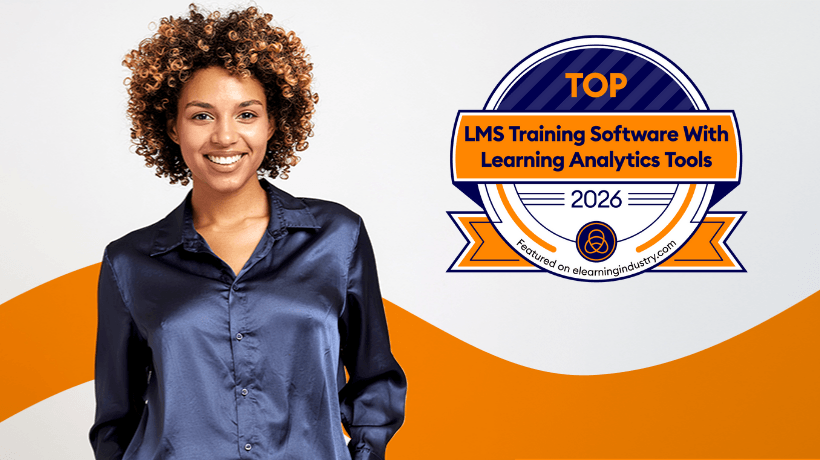6 Facts That Contribute Taking Your LMS To Learners
There are certain reasons why to change your corporate learning culture and take your LMS to learners. Let's discuss 6 facts that demonstrate the need for changing your corporate learning culture:
1. Organizations Need To Learn
Fact: The way we do business is changing at a pace unprecedented in history.
At the heart of this change is what is popularly known as the digital transformation of our corporations, institutions, and society. New ideas, driven often by technology and data, are flooding the workplace and driving the need to introduce or increase capabilities and skills in order for the workforce to take advantage of the opportunities that become available through these ideas. And opportunities, as always, come with a use-by date.
The learning requirements can be broadly categorized as upskill, reskill and compliance. Upskilling one’s skill level allows an organization to move up the “value-chain”, though reskilling allows taking advantage of a new opportunity, often adjacent to its current operation. Compliance-based training is driven by government regulations and industry/professional certification expectations of the marketplace.
Bottomline: Organizations need to learn to stay relevant.
2. Skill Building Cannot Be Left Solely To The Workforce
Fact: Employees are learning everywhere.
Proliferation of Public MOOCs and the omnipresent Google means that the information required to upskill oneself is easily available. This self-paced model of skill acquisition, however, does not align with organization's need to upskill itself in a time-bound fashion, because the window of opportunity is time-bound.
Publicly available information is a few orders of magnitude larger than what an organization can expect from their content development process. Presence of multiple knowledge sources for the same skill allows corporate learners to find what suits their learning preferences and depth of knowledge. However, these sources score low when it comes to accuracy and relevancy, both so important in a corporate environment. Also, how does one correctly resolve discrepancies which often arise between different knowledge sources?
There is another subtle problem with this kind of learning. The measurement of this learning in the absence of a formal framework can happen only on the job, and the ability of the organization depends on the proof of that skill. This Catch-22 lies at the core of the need for a formal learning organization.
Bottomline: Organizations cannot depend on the workforce learning by themselves.
3. Formal Learning Closes Skill Gaps Without Impacting Your Corporate Learning Culture
Fact: Employees value formal training.
A medication regime governed by a prescription does cure the disease, albeit the experience is something less than enthusiastic. At least most of the time. They are not designed to lead to a lifestyle change for the patient.
Formal learning initiatives through an LMS and learning programs are often seen in a similar light, address the skill-gap requirements at hand, without necessarily changing the learning culture within an organization.
It is no surprise that learning in an organization is measured by learning-surrogate metrics like the number of online training courses, training hours delivered, learning seat time, enrollments etc. The hard metrics around learning, translating in capability building learning attrition, are seldom tracked, if at all.
Limited by the availability of resources, formal learning initiatives struggle to deliver knowledge sources that are aligned to the varied learning preferences of their workforce. This works because it is an extension of the existing school system, so similarly qualified people, when presented with the same content, learn enough to get the job done. While bell-curve sub-optimality is acceptable in schools, the question to be asked is whether "B" continues to be an acceptable grade for staff quality within an organization.
It does take time to create quality learning programs. In a world of rapid changes and innovation, learning organizations are constantly falling behind in their attempt to update their knowledge base. To address this problem, organizations have turned to acquiring quality off-the-shelf third party content and cherry-picked SME-focused initiatives to either assimilate high-quality User Generated Content (UGC) or User Acquired Content (UAC) stored as PDF, WORD, HTML/URL, PPT or Video formats with some success.
The real fear of this one-size-fits-all content or complete unavailability of the formal content, is that people will increasingly revert to their Google-first search behavior. While this informal learning may solve a tactical problem in the learner’s context, the organization remains unaware, and is unable to track this learning and leverage the same learning in business.
Bottomline: Formal learning systems deliver but need to dove-tail with informal, User Generated Content (UGC) or User Acquired Content (UAC) to stay relevant.
4. Learner Matters
Fact: People go to LMS through email notifications, but they go to Google on their own.
People go to Google mainly to search and answer for an immediate question, or re-visit an answer to a previous question. Finally, though to a lesser degree, they also Google to learn about new things. This is the muscle memory of people towards information access. Formal learning systems must harness this behavior, as behavior change is hard, and will only lead to learner resistance.
When people come to an LMS, they are either going to start or continue their currently active learning (ala current question on Google), revise a past learning, or plan a future learning. And like Google, which provides search boxes, bookmarks etc, the search tools and access paths need to be different for these different learning requirements.
Time is of essence. The learner needs to find the content quickly, and more importantly to find the type of content aligned with their learning and language profile, audio-based podcasts or visually rich videos and multimedia interactions, text-rich PDFs or WORD documents.
Learners learn faster when they are enjoying themselves and are encouraged to undertake learning when they know the process is fast, effective and relevant. In turn, this helps organizations to react to time-bound opportunities faster and thereby with more impact.
Bottomline: Learner experience reduces skill gaps quickly and helps learners develop themselves.
5. LMS Needs To Pivot
Fact: LMS has gone to cloud, but with almost the same functionalities.
LMS needs to solve the content problem to keep up with demand, not just in knowledge coverage but also enabling multiple content choices for any specific knowledge area. This can happen only through democratization of the process to allow everyone to share their personal learning through the UGC/UAC route.
LMS must now handle a wider range of media types as content sources explode. It may extremely damage user experience if certain parts of the learning are dependent on plug-ins, browser or OS versions. This complexity must be hidden from learners, who should be able to consume without a technology installation check-list. Note-taking across media types is crucial for the revision experience.
Course equivalencies allow learners to achieve the same skills by taking any of the multiple equivalent courses based on their learning and language preferences. This gives the impression that while the learning objective may be prescribed by the organization, learners get the impression that they continue to retain control over the learning experience and are not force fitted into an one-size-fits-all model.
The LMS needs to deliver mobile experiences beyond simple mobile access. It must be mobile-aware, bandwidth-aware, and support seamless offline consumption. The information delivery must be equal, if not more efficient, to that on the desktop; for example, geolocation-aware information.
It is important that LMS goes beyond reporting on process metrics, and expands to tracking metrics aligned to business goals. How quickly is an organization closing the skill gap? How is that tracking against the plan? Dashboards must provide early warning if a certain compliance initiative fails to reach the desired milestone, and identify areas of concern so that the organization can take corrective measures.
Bottomline: Scaling of knowledge base, delivering personalized and mobile UX, and expanding reporting to align to business, forms the core of this pivot.
6. Taking The LMS To Learners
Fact: LMS is a four-letter word in the learning community!
Years of prescriptive learning, terrible user experiences, lack of mobile access (yes, in 2016!), and sheer lack of coverage has contributed to LMS acquiring a very bad reputation. LMS is simply not a digital property where anyone wants to hangout!
The ideas for pivot are important to start this process of rebranding. It is important that when people do come to an LMS, they get a very superior experience. However, the route to an LMS still remains email notifications. How do we get learners to come to the LMS at their need of learning? How do we embed learning into learners' lives in a quick, unobtrusive, and relevant manner?
Recommendation notifications deliver a list of relevant new information sources. Clicking on any of these takes you directly to the LMS learner app.
Bottomline: Making learning fun lies at the core of a cultural change.







